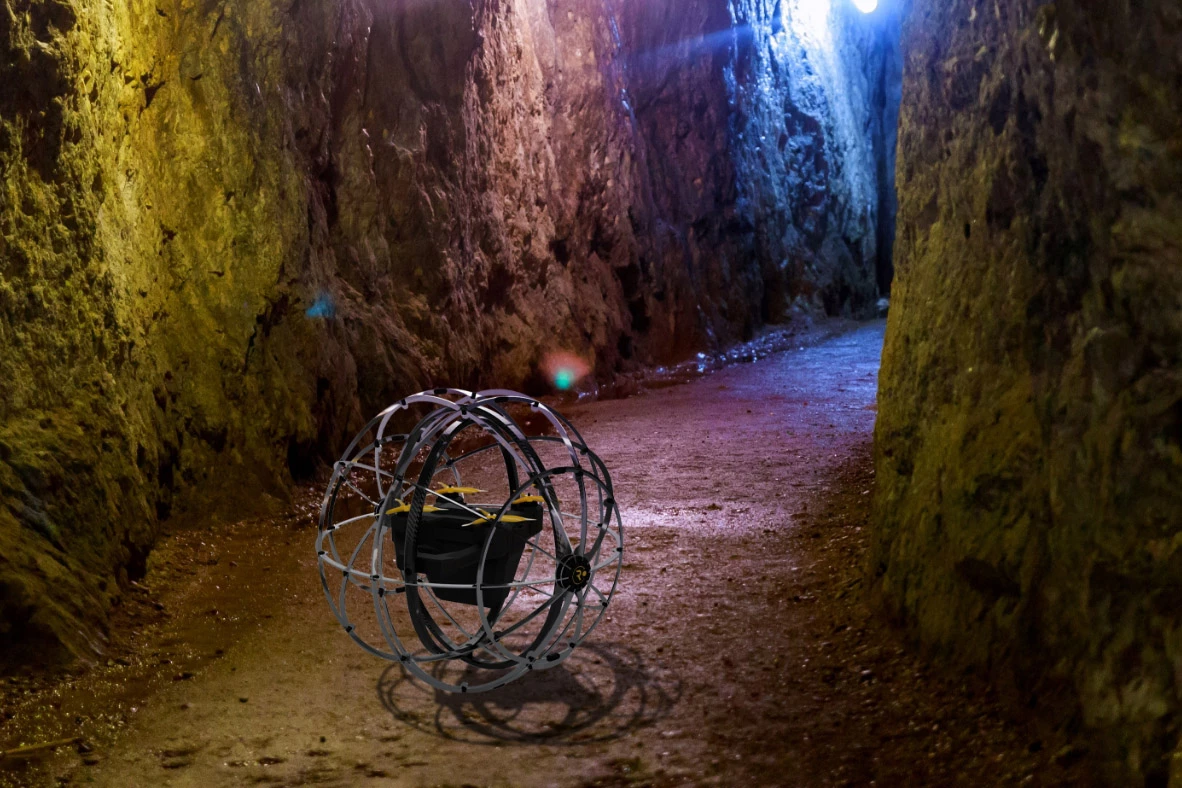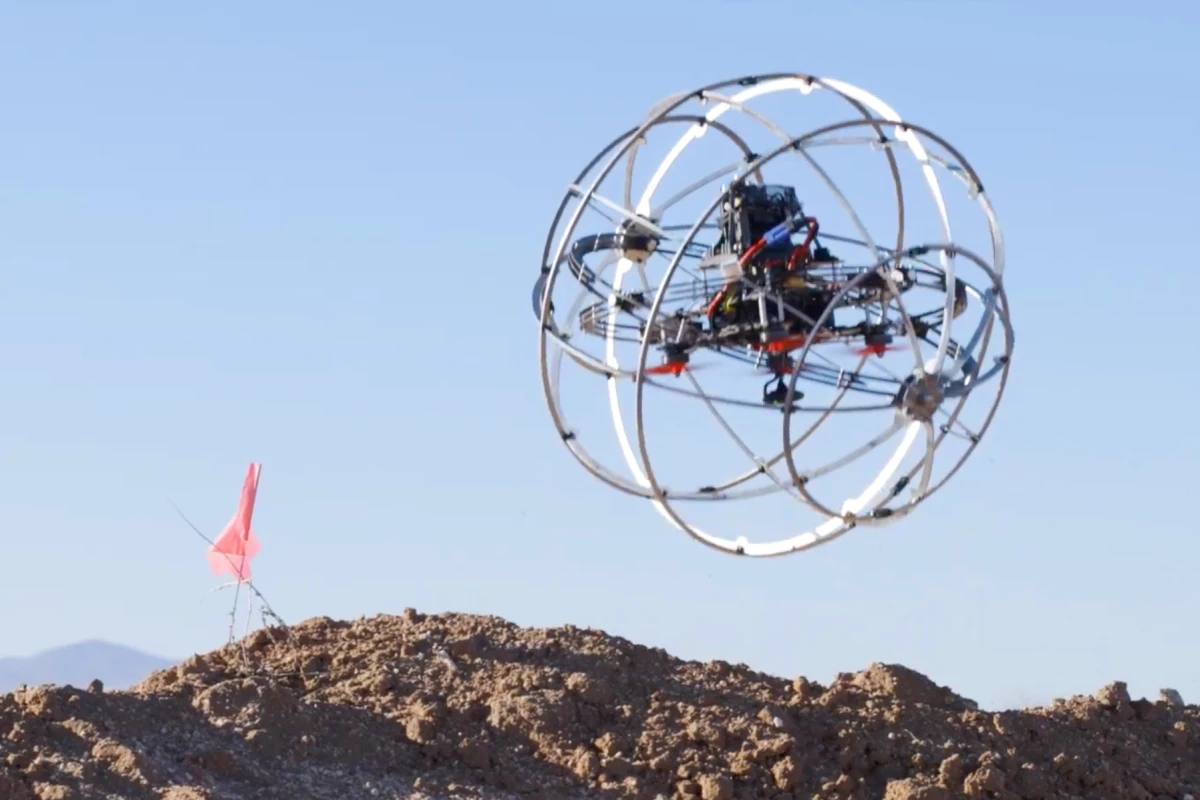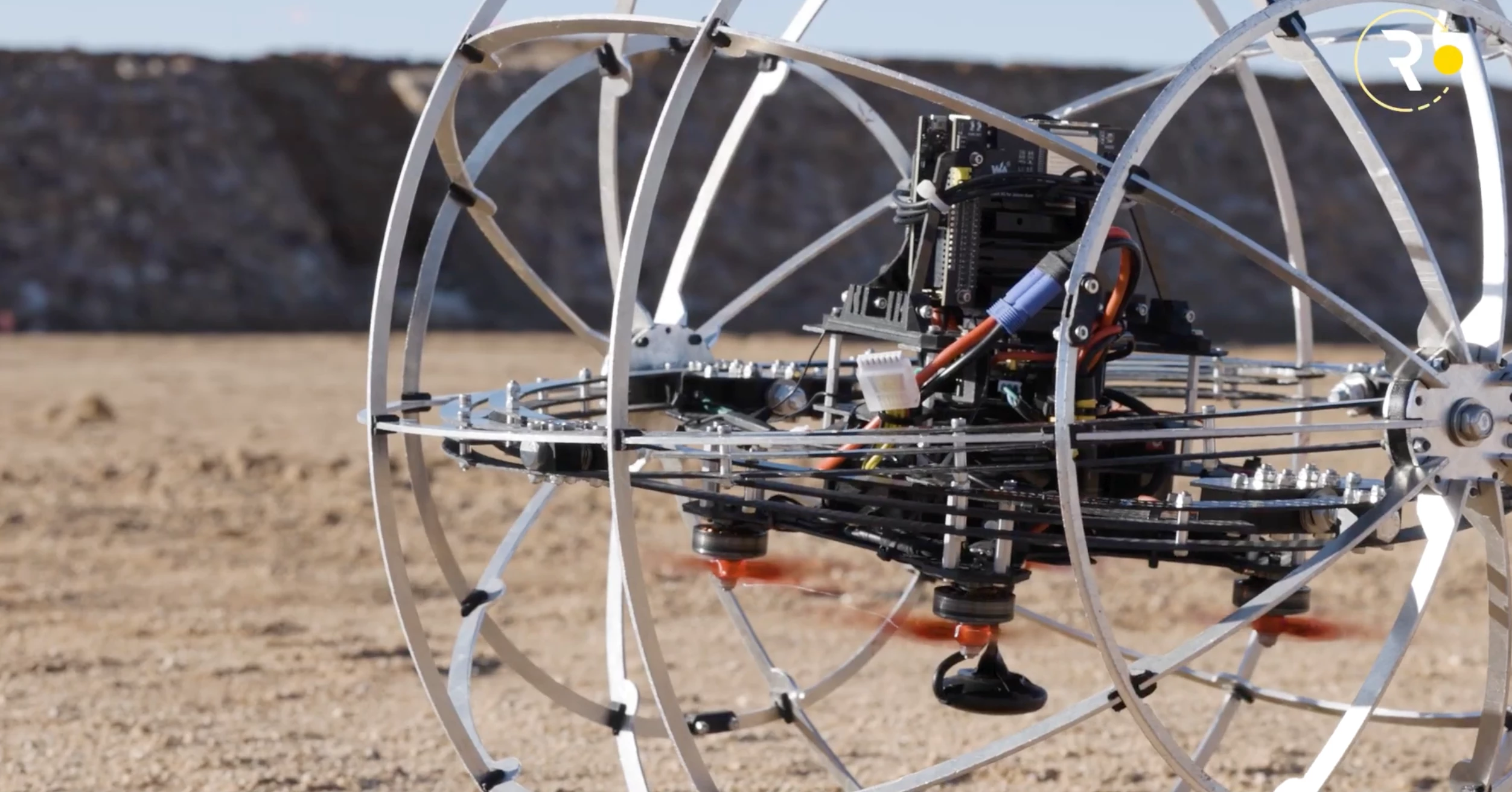Arizona's Revolute Robotics has presented its autonomous Hybrid Mobility Robot (HMR), a whirling, spherical cage that can fly like a multicopter, or roll in any direction using two gyroscopic gimbal rings. It's one heck of a thing to see in motion.
The HMR's lightweight exoskeleton is capable of deforming to a degree, making it a neat little shock absorber for landing, as well as helping to keep the key electronics isolated from too much vibration as this robotic hamster ball rolls, tumbles and bounces over rough terrain.
On top of that, the outer cage creates a nice exclusion sphere for the four decent-sized propellers used in flight mode – that's a nice safety bonus that'll enable indoor work near people, although it still looks heavier than anything I want dropped on my head.
It's built to run autonomously, preferring to roll where possible but using its flying capabilities to loft itself over obstacles, or assist the gimbals in rolling up steep inclines. Flight mode burns battery five times faster than rolling, so it's a sometimes treat.

Revolute – founded by a pair of University of Arizona graduates – has a number of remarkable-looking prototypes built and in testing.
The company hopes first to sell a fully developed HMR as an autonomous inspection robot for confined spaces, sending it down pipelines, for example, loaded with a customizable camera/sensor payload. In this case, the flight mode would allow it to easily climb up vertical sections of pipe in a way that wheeled robots can't.
Eventually, Revolute hopes to develop it as an autonomous security drone, and look into potential military uses. Both of these would take advantage of intelligent swarm capabilities where several HMRs could work together to provide multiple perspectives on a target.

There are potential applications in mining as well, such as assessing older mineshafts for structural integrity, and of course search and rescue, bomb disposal –anything where it might help avoid putting a human in danger.
Revolute has raised some US$115,000 at the time of writing through a StartEngine investment crowdfunding campaign, in order to get the HMR ready for commercial deployment and manufacturing.
Check it out in the video below. It's interesting to watch how the flight system behaves as it's trying to roll up that steep pile of rocks, since the gimbal motion sends the props nearly upside down a couple of times. It doesn't seem to matter, it soon finds which way's up and gets airborne.
Source: Revolute Robotics






